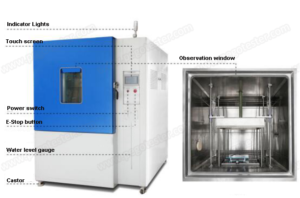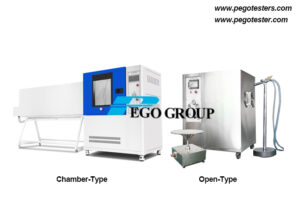The tracking test is key for evaluating electrical insulation material safety. Result accuracy depends on test system stability. Among key test components, platinum electrodes are preferred for their unique performance.
1. Chemical Stability: Resist Corrosion, Ensure Pure Test Environment
Platinum electrodes have unrivaled chemical stability. The tracking test requires periodic electrolyte addition (usually ammonium chloride), with strong corrosion. Electrolyte erodes copper electrodes to form copper salts, altering composition and creating false conductive traces on samples. Silver electrodes may react with chloride ions to form silver chloride precipitates, interfering with tracking judgment. Platinum, an inert metal, does not react with strong acids, alkalis or most electrolytes at room temperature. It maintains chemical stability, prevents electrode dissolution from contaminating the test system, and ensures true tracking.
2. Stable Conductivity: Low Temperature Coefficient of Resistance, Ensure Accurate Electrical Parameters
Stable conductivity is another core advantage of platinum electrodes. During testing, electrodes must stably conduct voltage and accurately feedback current changes, requiring strict electrical properties. Platinum’s temperature coefficient of resistance is 0.00392/℃, much lower than copper (0.00429/℃) and aluminum (0.00430/℃). Even with temperature fluctuations from local discharge, its conductivity remains stable. This stability ensures continuous voltage output and accurate current measurement, providing reliable data for judging material’s critical tracking value. Other metal electrodes may drift in electrical parameters due to temperature sensitivity, affecting result credibility.
3. High-Temperature Resistance: Withstand Extreme Heat, Maintain Electrode Shape
High-temperature resistance is critical for platinum electrodes in extreme test environments. During tracking formation, local arcing generates instantaneous high temperatures of thousands of degrees Celsius, far exceeding melting points of common metals (e.g., copper 1083℃, aluminum 660℃). Using these materials, electrodes easily melt, deform or break, changing spacing, disrupting electric field distribution and destroying test condition consistency. Platinum has a high melting point of 1772℃, maintaining shape stability under extreme heat. It ensures electrode-sample contact and electric field distribution meet test standards, making results comparable across different material batches and types.
4. Standardized Application: Meet International Norms, Ensure Test Credibility
In terms of standardization, platinum electrodes’ advantages have gained international recognition. IEC 60112 and GB/T 4207 both specify that tracking tests recommend platinum electrodes with purity over 99%. This specification is based on platinum’s unique ability to minimize interference. Other metal electrodes, due to performance limitations, cannot meet standard requirements for test repeatability and accuracy, struggling to enter standardized testing systems. This recognition highlights platinum electrodes’ irreplaceability in ensuring test credibility.
In summary, platinum electrodes excel in chemical stability, conductive stability, high-temperature resistance and standardization, making them ideal for tracking tests. These advantages ensure true and reliable test data, providing a unified, scientific benchmark for evaluating electrical insulation materials and strengthening safety barriers for electrical equipment operation.



